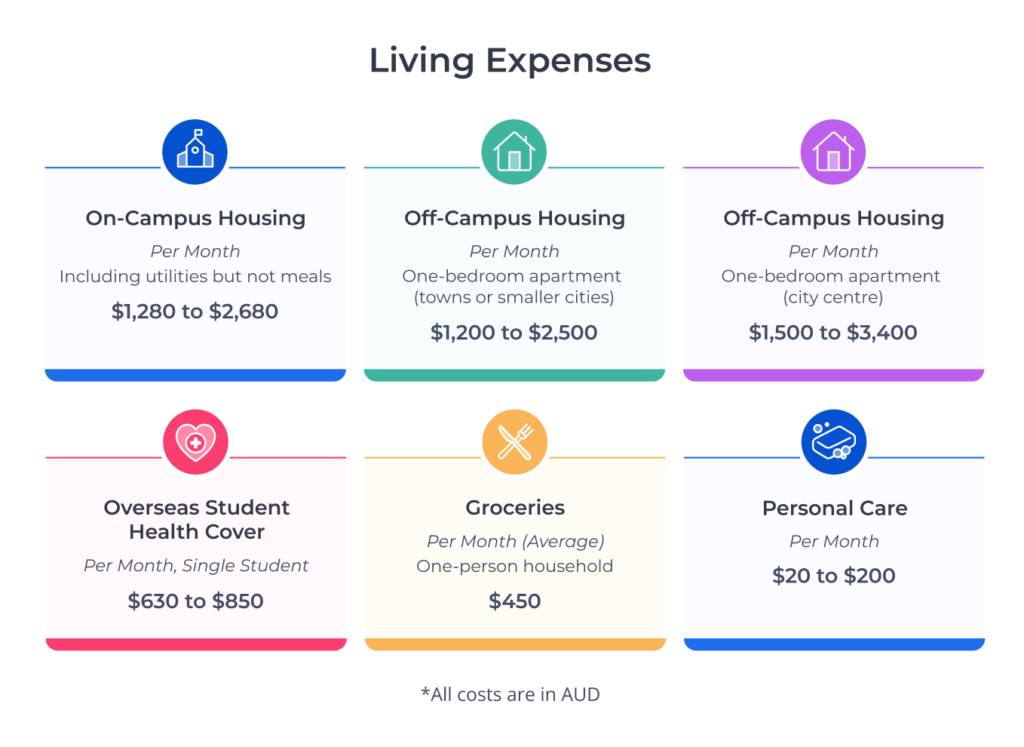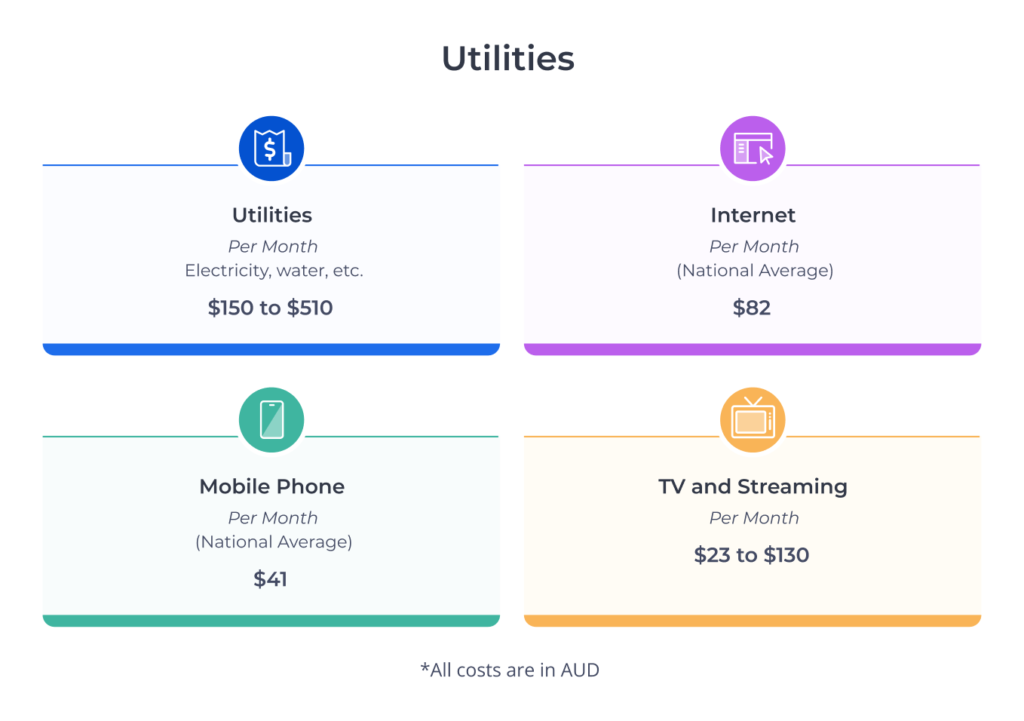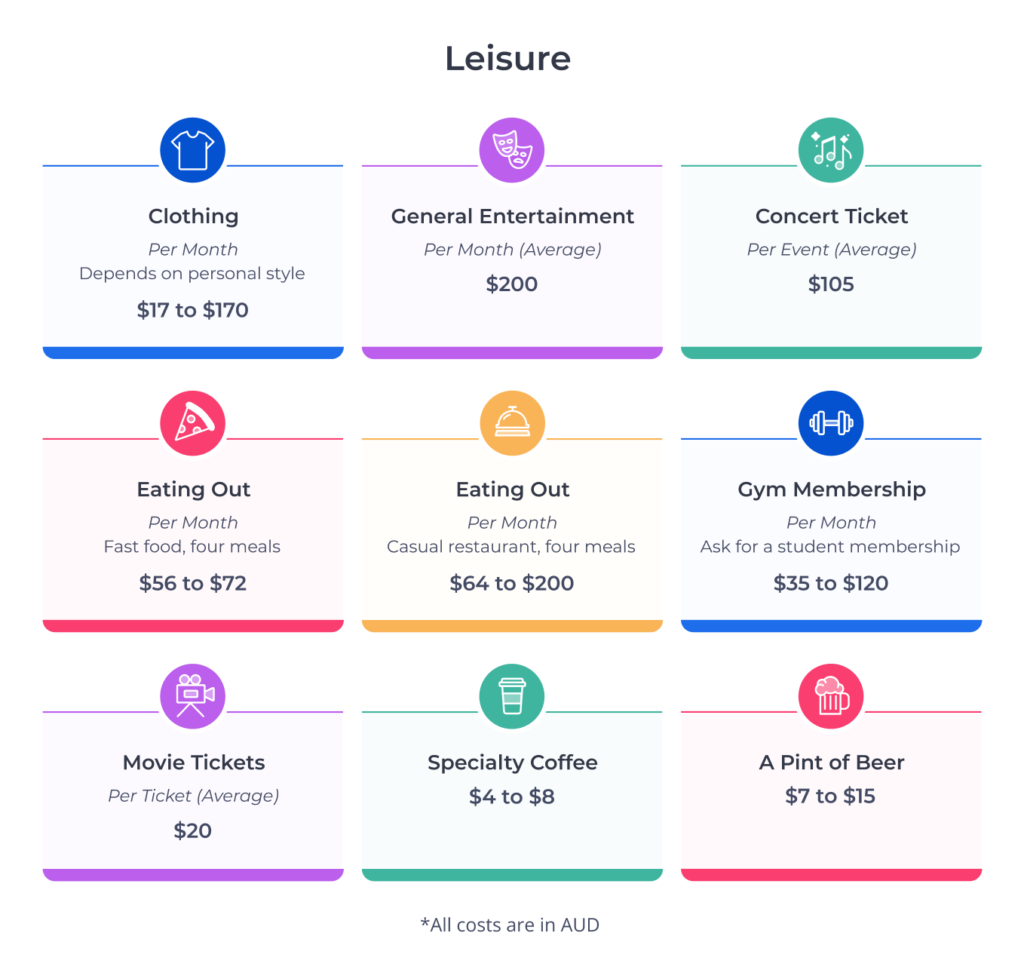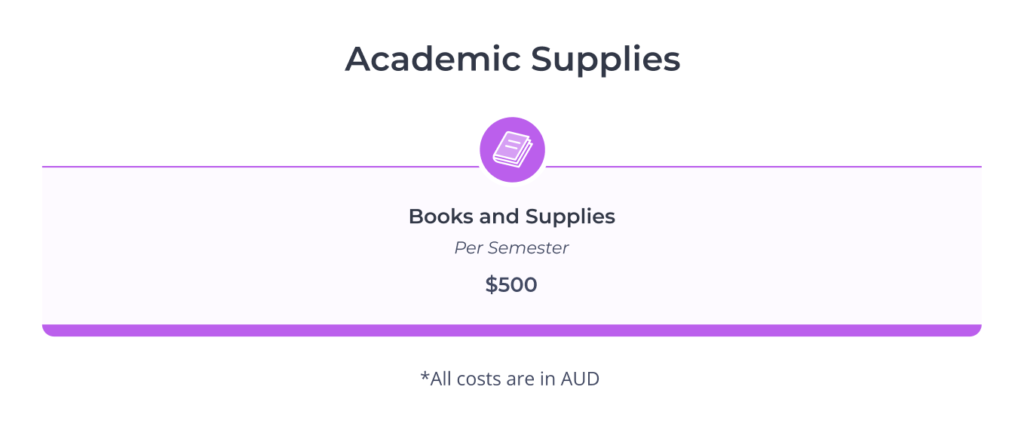Are you thinking about studying in Australia? If so, it can be an incredible adventure. Not only are Australia’s academic institutions top tier, but its natural beauty and the quality of life it offers are renowned. Before you go, it’s wise to estimate your monthly living expenses. This will help you establish a budget. As you prepare your budget, remember the minimum proof of finances you’ll need to show was updated in 2025. To save you time, we’ve rounded up some of the most common cost of living expenses in Australia below.
All amounts below are accurate as of December 2025, but change regularly. For the most current information, check a cost-of-living calculator, or talk to your international student office.
Not sure where you want to study? Read more about the cost of living in Canada, Germany, Ireland, the United Kingdom, or the United States to inform your decision.
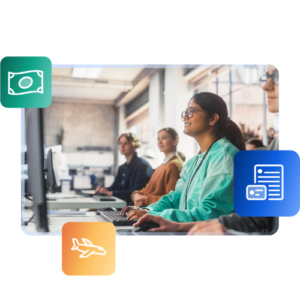
Living Expenses
Your living expenses will depend on factors like your dietary restrictions, housing, and personal hygiene must-haves. In Australia, groceries might be more expensive than you’re used to. By shopping at farmer’s markets (look for fruits and vegetables in season as they’ll be cheaper and likely tastier), or joining supermarket reward programs, you can save money.
Housing costs vary depending on what kind of accommodation you choose, and where you are. Typically, rural areas are more affordable than cities. In fact, living expenses in Sydney can be significantly more expensive than other cities.
Here are some common living expenses in Australia:1
Note: OSHC coverage will vary in price by provider and coverage level. The range above is typical for basic (required) coverage.
Scholarships and other forms of financial assistance can make studying abroad more affordable—check out current options offered to international students in Australia.
Utilities
Utilities like heating, electricity, and water are essential for a comfortable living space. If you’re living on-campus—whether in purpose-built housing, university-managed accommodation, or residential colleges—utilities will be included in your rent. However, if you’re living off-campus, you need to factor monthly utilities into your budget:2
Utility bills may vary depending on your:
- Housing type and location
- Lifestyle
- City and regional regulations
- Local climate
If you’re looking for a more specific estimate of what utilities in your building may cost, ask your building manager or landlord. If you’re not in contact with one, Study Australia’s cost of living calculator is helpful.
Remember to include the cost of your phone, television, and internet into your budget. Luckily, if you live on-campus, television and internet bills are often included in your monthly rent.
As you prepare to study in Australia, you’ll have to show your genuine intent to study. Learn about what you must do to satisfy Australia’s Genuine Student requirement.
Leisure
It’s important to also have fun while studying! When deciding what to include in your leisure budget, ask yourself these questions:
- How do I like to spend my weekends?
- What makes me feel good about myself?
- Which activities make me the happiest?
- What helps me unwind after a stressful day?
You may decide that a gym membership or surfing lessons will help you unwind and meet new friends. If so, see what your campus offers: there may be free or low-cost facilities or intramural sports you can join. Or, maybe you feel happiest during a night out at a movie or a club. No matter how you choose to relax, remember to save enough to cover your expenses in case of an emergency. Here are some average costs for leisure activities in Australia:3
Many international students work while studying. Here are some strategies for finding part-time work in your field.
Transportation
For international students, taking public transit and bicycling are common travel options. If you’re in undergraduate studies, look at buying an International Student Transit pass (IST Pass). It can save you 50% on the full transit fare.
Also, many cities in Australia have bikeshare programs, where you can borrow a bike to go short distances, if you’d rather not buy a bike or don’t have space for one. In general, if you live off-campus, you’ll spend more on public transportation than if you live on-campus:4
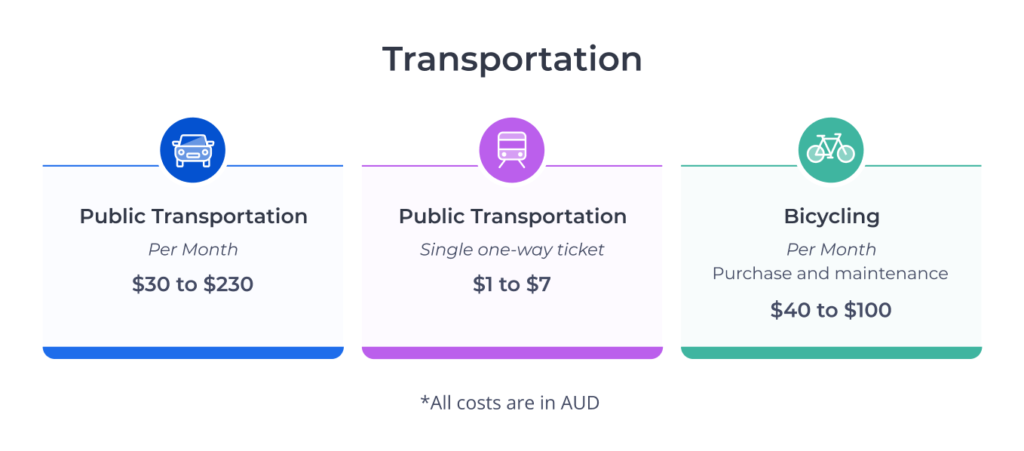
Academic Supplies
You can save money on textbooks and academic supplies if you’re strategic. When shopping for highlighters, sticky notes, and binders, buy what you need and try to reuse supplies from earlier semesters. Campus job fairs and other big events are great places to pick up free branded pens, notepads, and other supplies, too. Here’s a quick look at the average cost of academic supplies per semester:5
When looking for textbooks, see what you can borrow through your institution’s library as a long-term loan. Some books may also be available at your city library, if you’re in an intro course or reading books with general appeal. If you can’t borrow it, visit your university or college’s bookstore or use sites like StudentVIP to purchase books secondhand. Just make sure you’re buying the right edition.
Australia’s cities offer a range of climates, cultures, and communities. Wondering how to choose where to study in Australia? We’ve got you.

It’s important to consider all of these factors when planning your studies in Australia. Understanding your financial health and creating a monthly budget should be key steps in your preparation. Refer back to this blog when you want to start planning!
We can help you bring your study abroad dreams to life. Visit the ApplyBoard platform to find an Australian academic institution and course that matches your goals.
FOOTNOTES:
1. On-campus housing and personal care: Study Australia, Cost of Living Calculator (low range: Darwin; high range: Sydney for managed apartments.) Off-campus housing: Numbeo, “Cost of Living in Australia.” Accessed Dec. 12, 2025. Groceries: Meagan Lawrence, Canstar Blue, “What is the average grocery bill?” Aug. 11, 2025. OSHC: Joel Noronho, AECC, “Health Insurance for Students in Australia.” Updated Dec. 3, 2025.
2. All amounts are from Numbeo, “Cost of Living in Australia” except Maddison Leach, 9News, “The average Australian subscribes to two streaming services. In 2025, that can cost up to $129.99 per month” for TV and Streaming.
3. Movies, coffee, beer, and eating out amounts: Numbeo, “Cost of Living in Australia.” Accessed Dec. 12, 2025. Clothing: Study Australia, Cost of Living Calculator. Entertainment: Charles Sturt University, “Cost of living.” Accessed Dec. 11, 2025. Concert tickets: Avani Dias, Amy Donaldson, and Lara Sonneschein, ABC News, “Live Nation’s industry takeover tearing the Australian music scene apart.” Oct. 13, 2024.
4. Public transit: Numbeo, “Cost of Living in Australia.” Accessed Dec. 12, 2025. Bicycling: Chris Barnes, Choice. “How to buy the best bike for your needs.” Updated Jan. 22, 2024.
5. Books and supplies: University of Sydney, “Living Costs.” Accessed Dec. 12, 2025.

